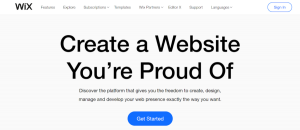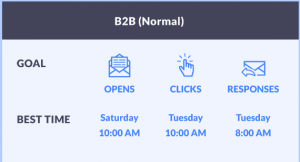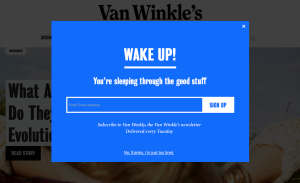— September 11, 2017

The Guardian is a 195 year old British newspaper which expects to burn through £90m in 2017 after incurring damage of £200m the year before.
The Economist once described The Guardian as:
“[T]he most stylish paper in the hyper-competitive British quality pack, the wittiest and best-designed, the strongest for features, the one most likely to reflect modern life.”
At it’s peak it sold half a million papers per day. In June 2016, at peak Brexit-vote tension, The Guardian online claimed to have over 165m unique monthly browsers.
Yet, despite this history, reputation, and traffic, there are serious warnings that the money will run dry in as little as six or seven years.
If they can’t make it work, how can anyone? What future is there for journalism and traditional media?
In this article, we’ll explore a number of business models in use today on both a large and small scale, and begin to analyze their strengths and weaknesses.
We’ll break that down into 10 key recommendations for anyone looking to hop onboard the media startup bandwagon.
Then, for a bit of fun, we’ll delve into what could lie ahead for the future of print media.
Extra, extra! Read all about it!
Life’s easier with a sugar daddy – or momma
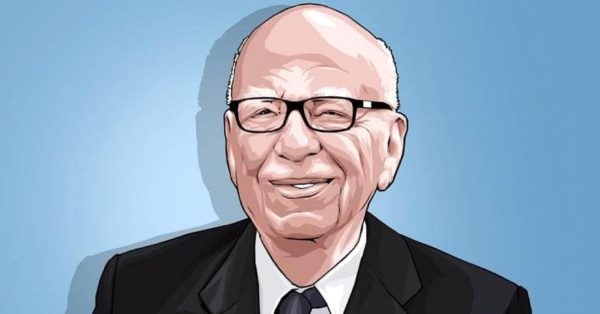
Lots of media outlets are owned by rich folk.
It has become the normal state of affairs for wealthy individuals to expand their share of the media sphere as the market has become increasingly reliant on small margins. Local newspapers struggle to survive as print circulation drops and they lack the available capital to invest in expansion.
When we think of media tycoons, we think of Bloomberg, Murdoch, and now Bezos stateside. In the UK we see Murdoch again, Lord Rothermere, and the Barclay brothers. Other notable names like Warren Buffet and John Henry crop up when looking into media ownership in the US too.
According to the Who Owns The UK Media report from the Media Reform Coalition, the media market is becoming increasingly centralized within fewer and fewer hands:
This short report shows that just three companies dominate 71% of the national newspaper market – a market that may be shrinking but is still crucial when it comes to setting the agenda for the rest of the news media. When online readers are included, just five companies dominate some 80% of market share.
Clearly, having a bit of money behind the company is an effective way of gaining advantage over the pack. That capital investment can go into revamping online presence, creating content across different media pathways, and increased spend on business operations like marketing, analytics, and sales.
Even The Guardian’s corporate structure uses a wealth fund to invest in stocks to cover the newspaper’s operating losses. However, it’s not necessarily successful enough to guarantee The Guardian’s future if the media outlet doesn’t improve its revenues. As Michael Brunton-Spall notes for the World Association of Newspapers and News Publishers:
The non-profit parent company has traditionally been organised almost as a private-equity firm, with external shareholdings which have helped to fund newspaper losses and capital investment. These have produced an endowment of some £700m. But, after years of bold expansion – in the UK as well as the US and Australia – The Guardian is now coming to terms with the fact that, unless it stops the losses, even these reserves may run out in 6-7 years.
Billionaire or no billionaire, a newspaper needs to be generating revenue. If it doesn’t become financially sustainable it may find that the deep pockets of its proprietors eventually turn their attentions elsewhere.
We saw this recently in the UK when Russian oligarch Alexander Lebedev sold off parts of The Independent which he originally bought in 2010. First, it’s smaller tabloid sibling, the i. Then, last year, it ceased its print copy and closed The Independent on Sunday.
If you don’t make money, you won’t last long.
So, how do newspapers and online media outlets make money?
Advertising works but does it have a future?

The vast majority of all online adverts go through either facebook or google. A report from eMarketer showed that in 2016 Facebook and Google collectively accounted for 57% of all mobile advertising.
Many news sites you visit still have adverts on their pages, but the value of these adverts seems to be dropping with brands preferring more targeted ways to reach their customers.
On Facebook you can target very intensely which enables brands to lower their customer acquisition costs. There is such a large pool of users on Facebook and so much available data on each of them that brands can pick apart demographics and locations more precisely than through traditional media advertising.
This has been hitting media outlets hard, but many have approached the problem with innovative ways of redefining their value pitch.
Brunton-Spall reports on ex-Guardian editor Alan Rusbridger’s comments after stepping down in 2015:
He said it had forecast online revenues of £100m. In the end, the newspaper’s digital turnover was £81.9m – down 2.3% on 2014 “because it all went to Facebook. They are taking all the money” because “they have algorithms we don’t understand, which are a filter between what we do and how people receive it. This is going to get worse because they have a means of distribution which we simply can’t cope with and the more people switch on to these devices, the more problematic that question is going to get.”
So, what are other outlets doing for adverts?
The Outline was founded by venture capitalists and chooses to only have a small number of advertisers at any one time. It then promotes those products or brands hard with adverts which are both intrusive and non-disruptive at the same time. Their clever use of design – providing a vibrant, colorful, yet disjointed feel – masks the presence of the tastefully composed adverts within the overall aesthetic.
Perhaps the focus on writing to a particular demographic and providing this couture advertising package to those readers will allow for ads to prove successful again as a model? The lack of clearly scalable opportunities for this particular angle The Outline have taken makes me curious how it will move forward, but it’s one to follow.
And there is precedent for doing higher value deals with companies looking to advertise in a way which is tailored toward your outlet. After all, native advertising and partnership schemes are in a sense an extension of the traditional advertising model.
Companies like Buzzfeed have utilized native advertising as one of their revenue streams and seen themselves rocket into mainstream discourse. Their prices are custom so it’s difficult to report on how much it costs brands, but Buzzfeed are willing to produce articles, listicles, and videos for your brand and promote them to their audience – targeting to your needs.
One advantage this has for brands is the creation of highly professional evergreen content which will continue to show and promote your brand for years to come. Through this kind of native advertising model, publishers are able to provide a different service to Facebook – they can play on a form of value Facebook isn’t currently equipped to create.
As this model has developed, third party applications like Hexagram have begun to break into the market. Companies like these source publishers who are happy to have promotional content appear on their site and connect them with brands who want that content to promote them. Hexagram then creates the content and pushes it through to the publisher.
The revenue for publishers from third-party content creation will be lower than the in-house Buzzfeed model, but not every media outlet has the infrastructure in place to deliver a Buzzfeed style system. The Hexagram model probably adds a useful media revenue stream to small time publishers.
In conclusion: Traditional online ads are likely dead, but fresh daring approaches look to still have a future.
Develop a passionate niche audience

Maybe it’s due to the polarization of politics in recent years, but media startups on each side of the aisle seem to be flourishing somewhat.
The greatest example of this from a business perspective is surely InfoWars, the show and site hosted and owned by Alex Jones. He has cultivated a niche to the point where he hasn’t gone mainstream but the mainstream has gradually gone to him.
His material, and that of other contributors, focuses itself on a particular demographic and creates a need for certain products. On the one hand Jones will tell you that “they” are putting fluoride in the water to “turn the fricken frogs gay”, and on the other he’ll promote a series of related products from his Superblue Fluoride-Free Toothpaste to his Super Male Vitality Pills.
It’s a remarkable business model, but its genius comes in the various revenue streams they’ve implemented. The comprehensive online store, a booming YouTube channel, and a steady flow of donations from their committed core.
Not many other sites are utilizing this model to the extent InfoWars are, with a fully decked out e-commerce operation. However, merchandising is employed by sites that have been able to cultivate a focused demographic niche. Breitbart provides a relatively similar operation to InfoWars but with smaller scale merchandising. After recent furore has seen a number of advertisers pull their ads from the site we could see Breitbart learn lessons from the InfoWars tactics and mobilize their supporters’ wallets a little more. With Bannon back at the helm, one would expect Breitbart to make some bold moves.
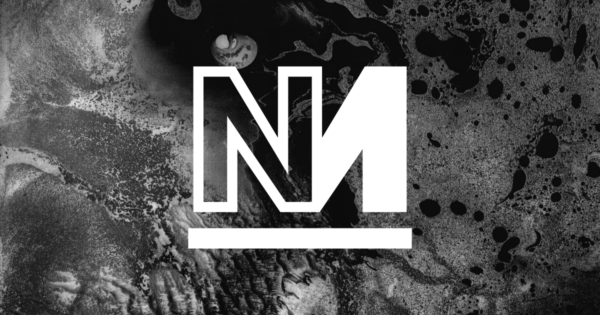
On the left in the UK we see some similar themes working for certain media startups. Novara Media pushes for donations and runs crowdfunding events for key milestones. Alongside that push they’ve also been moving more into the merchandising game; expanding their stock and going after the needs and wants of their younger more hip demographic for an upcoming store launch on the 22nd of September 2017. Expect tote-bags, mugs, and slim fit tees. I wouldn’t be surprised if we saw a beanie or two.
Another UK leftwing media startup which was influential in the recent snap election was The Canary. This media venture doesn’t employ an online store, but it does encourage membership through which you can have a say on editorial policy along with some joining gifts. For the £40-and-upward-a-month membership package you get to have conference calls with the editorial team every few months.
The Canary’s readership might not be interested in buying Super Male Vitality pills, but they are interested in a media organisation pioneering their views and in which they can feel truly listened to. Each of these outlets has a niche following which largely feels very strongly about the organization. As such, readers are willing to donate and to buy.
But targeting a niche audience with populist overtones isn’t the only way to build trust from your readership….
Just be more reputable than the next guy

In the US, both the New York Times and the Washington Post have seen their subscriber numbers increase over the first year of the Trump presidency.
One suggestion for the rise in these numbers is that many people have become so worked up over the presence of fake news that they’ve decided to financially support the outlets they believe are reputable. That and, if you’re a democrat, you’ve probably been very happy with both the NYT and WaPo for their investigative work and analysis during Trump’s tenure.
As reported by CNN, referring to the New York Times:
This has been the story of The Times for several years: a growing dependence on subscribers to offset difficulties on the advertising side.
The same is broadly true in Britain. The Times and the Financial Times both have a significant amount of their content blocked behind membership gateways – The Economist too, but seemingly with more freely accessible material. These publications are in a very healthy financial position.
The readers of The Times are loyal to their newspaper, generally in a higher socio-economic band, and trust the journalistic integrity of the newspaper. Of course, the FT and Economist prosper because they deliver niche material and are very trusted in their line of work – along with the above factors mentioned for The Times. Copies of both are sent out on international delivery en masse; if I want to pick up a copy of either in Spain, I can do so with ease.
The final one to mention is Private Eye. This best selling British current affairs magazine recorded its highest ever circulation in the end of 2016. The Eye generally covers stories relating to other UK media, plus investigative journalism into local and national government actions, with a healthy dose of satire to keep it entertaining.
They have an underwhelming web presence and yet look healthier than ever. Their reputation and integrity is sought out by their army of subscribers, who are also no doubt glad to read something not on a computer screen for a change.
These publications all enjoyed the public trust already before the digital world took over, but they decided to stay true to their core service: quality in-depth content. Other formerly reputable publications are probably looking at these subscriber counts and wishing they hadn’t taken the listicle-oriented growth strategy…
It’s all about trust. Only then can you swindle your audience.

I don’t really mean swindle. Your audience are willing to pay for the value they perceive you are giving to them.
The audience you cultivate will reflect the content you are creating. This puts you in the driving seat.
What content you create and how you market it will define your future audience and the relationship you share with them. Simply receiving page views or engagement isn’t enough – there has to be an extra level of bond constructed.
Reddit is one of the most active websites in the world yet they’re unable to really leverage advertising, they struggle to stop the losses with their Reddit Gold revenue stream, and they introduced last year a new affiliate linking system in the hopes of finding a way to monetize their userbase.
Perhaps there is a sense that Reddit doesn’t actually create the content, they merely aggregate it? That could present the barrier between self-identifying redditors and their wallets?
Either way, the three ways we’ve highlighted so far of building audience trust have been centered around reinforcing to readers the value that the site provides for them.
InfoWars tells you that everyone else is lying to you – “only we’re telling you the truth”. The left wing media startups in the UK tell you that everyone else is unconsciously adhering to the capitalist hegemony – “only we’re telling you the truth”. While the established publications tell you that everyone else is just not really as good – “only we’re telling you the most accurate representation of the truth which can be confirmed at this moment in time”.
Each of these publications has a clear value they provide to their readers. Through that they create a bond. That bond – not pageviews, shares, or comments – is what they monetize.
Start a media company and actually make money: 10 recommendations
Let’s do this in a concise list. This is my list. You can critique it for me in the comments below.
I feel that the areas we’ve covered so far in the article give us an insight into strategies we can use for building a media startup. Not every company could replicate these – native advertising will likely lose a left wing audience pretty quickly.
There are countless points which could have been made but here are my top 10 takeaways for someone wanting to start their own media company.
- Define your audience. Who are you targeting and why? What does this audience like and what do they not like? What do they feel strongly about and what splits the crowd? What stuff do they buy? What kinds of products are they passionate about?
- Understand your value. Figure out what makes you and your service different. Work out how to convey that message to your audience. Devise a way to communicate your value clearly through your services and core message.
- Don’t bother with print if you’re not already established. This one’s pretty simple. You can keep your operating costs low and not worry about overheads for the time being. Simply set up a WordPress and get to work.
- Be ambitious and tell people about it. Big projects get attention. The New European started after the Brexit vote with the goal of stopping Brexit before it was able to happen. It’s been one year now and the BBC show the front page of the New European on their newspaper headlines segment. Alex Jones wants to save the world from interdimensional reptilian pedophiles – don’t tell me that’s not ambitious.
- Offer a membership model. As we saw with The Canary, an audience which feels you speak for them is audience which wants to engage with you. Maybe members can influence editorial policy or get involved in equity crowdfunding for key moments of expansion? A US lefty mag, Jacobin, offers different subscription models depending on how much you earn – reinforcing their core socialist message to their readers in the process.
- Create some locked membership-only content. This gives your members added value while giving you the opportunity to join in partner programs with larger publications’ subscription models or joining Netflix-for-magazines services like Texture. These avenues can drive more people to your content while also picking up money from the partnerships.
- Use third party services to deliver high value adverts to your base. You know what products your audience like and want to buy. Tell a third party native advertising company like Hexagram and have them create content for you while you get paid for hosting that content. If it suits your audience, they won’t mind – just find a creative way to frame it.
- Use that affiliate marketing. Reddit have attempted to move in the affiliate marketing game and you can too. When you’re linking to a product, be direct and tell your audience to buy it through the link so they can help keep your important content alive.
- Start a YouTube channel. Pretty much every article you write could somehow be repurposed into a video with a little effort. Utilize your content across multiple platforms and grow those views. You won’t make much money from YouTube in the short term, but it could start to bring in more money as you grow and it will help more people discover your quality content. More media, more channels, including ones which won’t generate revenue – podcasts, live streams, snaps and tweets, etc. Face to face interaction builds connections and trust.
- Make sure your content is good. People won’t keep visiting if you aren’t producing quality. Yes, use appealing headlines but don’t use clickbait outside of the occasional ironic article. Deliver on your promises and give the reader a reason to want to click on the next article of yours that they see. Don’t break the trust.
Netflix, Bitcoin, maybe monopolies; what lies in the near and distant future?
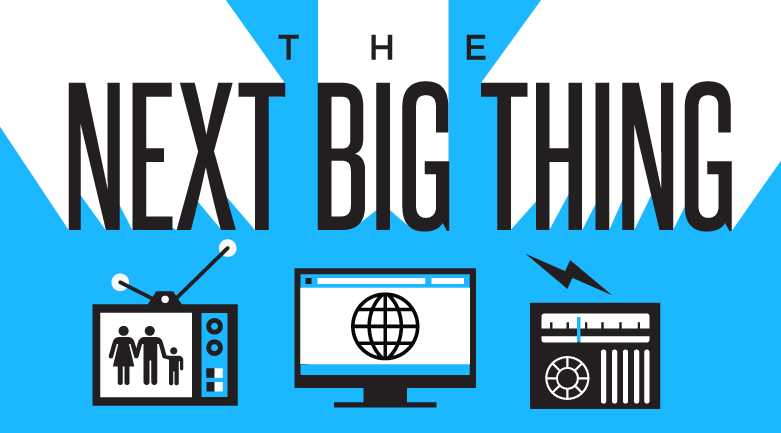
Finally, what can we expect to see have success in the future? Let’s look at a couple of options and how they stack up against what we’ve looked at so far.
- We could see the rise of Netflix-style systems where you pay for aggregated locked content. Texture is already offering this service in the US and Canada with full access to magazines National Geographic, Time, Vanity Fair, GQ, and many more. They charge $ 9.99 (apparently normally $ 14.99) for access to over 200 magazines. This scores well against our list of recommendations above. No adverts, no expense on printing, reduced marketing spend for all. There are a number of magazines on Texture’s service which I would willingly sign up for, but if I sign up I’m a potential new reader for 190 other magazines. Win win.
- Medium are offering a similar kind of service with their 2017 foray into monetization. They offer a premium service to unlock content for $ 5 a month. They’re introducing an applause button where you click it when you like what you’re reading. How you’ve clicked over the month will then determine which contributors receive what proportion of your $ 5. This could work well given that Medium thrives on individual journalists and bloggers building close relationships with their readers; Paul Mason’s Mosquito Ridge is a personal fave. My only concern is that why would you pay to access a blogosphere? Individual journalists can be supported via Patreon and free content can be found in lots of other places.
- Brand led content is another potential avenue for future media to take. I mean, you’re reading this article on Process Street. Process Street and other products produce media content of various forms as marketing and SEO while operating kind of like a media outlet. Big companies like Nike produce loads of sports related content to the extent that you would say they have a mini media company as part of their operations. This works because of the audience focus which companies like this take and because they have an inherent means of monetization. Expect more of this in future. I bet my first born on it.
- This shouldn’t sound controversial, but goes against the digital world narrative: Highly trusted sources will remain traditional. Private Eye will not stop its print edition. The Financial Times will not start publishing: “You Won’t Believe What Demonetization Does To Developing Economies -Number 8 Will Blow Your Mind!”. The more the digital world changes and new outlets pop up, the stronger certain traditional media outlets will bond with their readers.
- A plurality of very niche media outlets will vie for attention as the barriers to entry are so low and monetization options become clearer. New media startups will jump on the bandwagon in a good way. Great content focused on specific things will make a positive addition to the media landscape.
So, those are my expectations for the near future. You may disagree. If you do, @ me in the comments and tear me a new one. But here’s two final possible scenarios for the further future. They both seem unlikely, but they would utterly change the media landscape.
- Facebook or other big social media companies start to produce content themselves. Facebook already encourage publishers to use their instant article format to load pages from Facebook quicker. Imagine if Facebook decided to capitalize on this fully and begin to integrate the whole publishing experience into their platform. You might all call me crazy, but I think this is Facebook’s obvious next step and the instant articles are quietly one of the most important things to happen to digital media for a long time.
- Utilizing the blockchain and cryptocurrency to tie journalism into a MediaCoin. Exactly how this would work, I’m not sure. However, imagine a media environment like Medium or Texture but built on the blockchain like Etherium with its internal cryptocurrency Ether. If someone could conceive of a way to create a mechanism for coin creation which meant that producing quality media could act as mining, then this could prove to be a really interesting step to monetizing content. A company like Matchpool uses making connections between users as its coin creation mechanism, so there is precedent for this kind of approach.
Whatever happens in the coming years, the media landscape is changing. Monetization is the central problem for the media industry at the moment and many outlets may not survive it.
Brunton-Spall phrased it best:
The 30 UK newspaper journalists massed outside Downing Street for a recent statement by the UK’s Prime Minister (which would be all over the web and broadcasting hours before they could even print it) tell the story of an industry that is still dreaming about a glorious past which lives on in their current ways of working.
Have you worked in the media industry? What changes have you seen and what do you expect to see? Let me know in the comments below.
Business & Finance Articles on Business 2 Community
(62)
Report Post